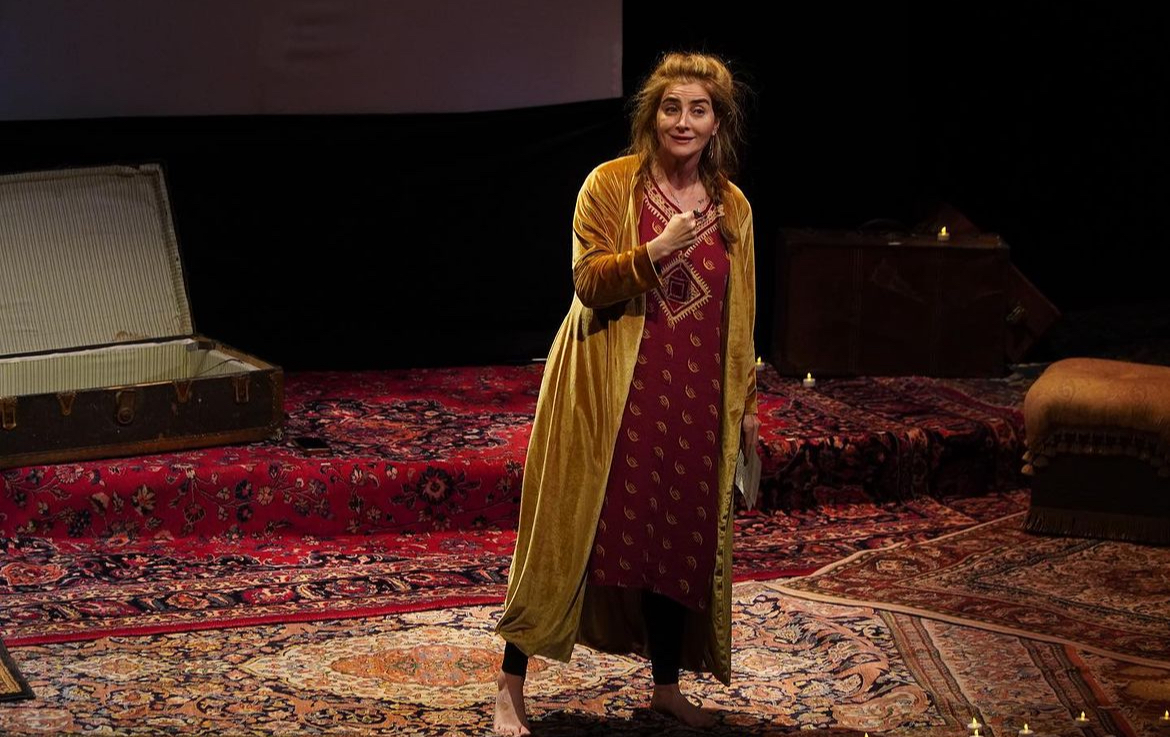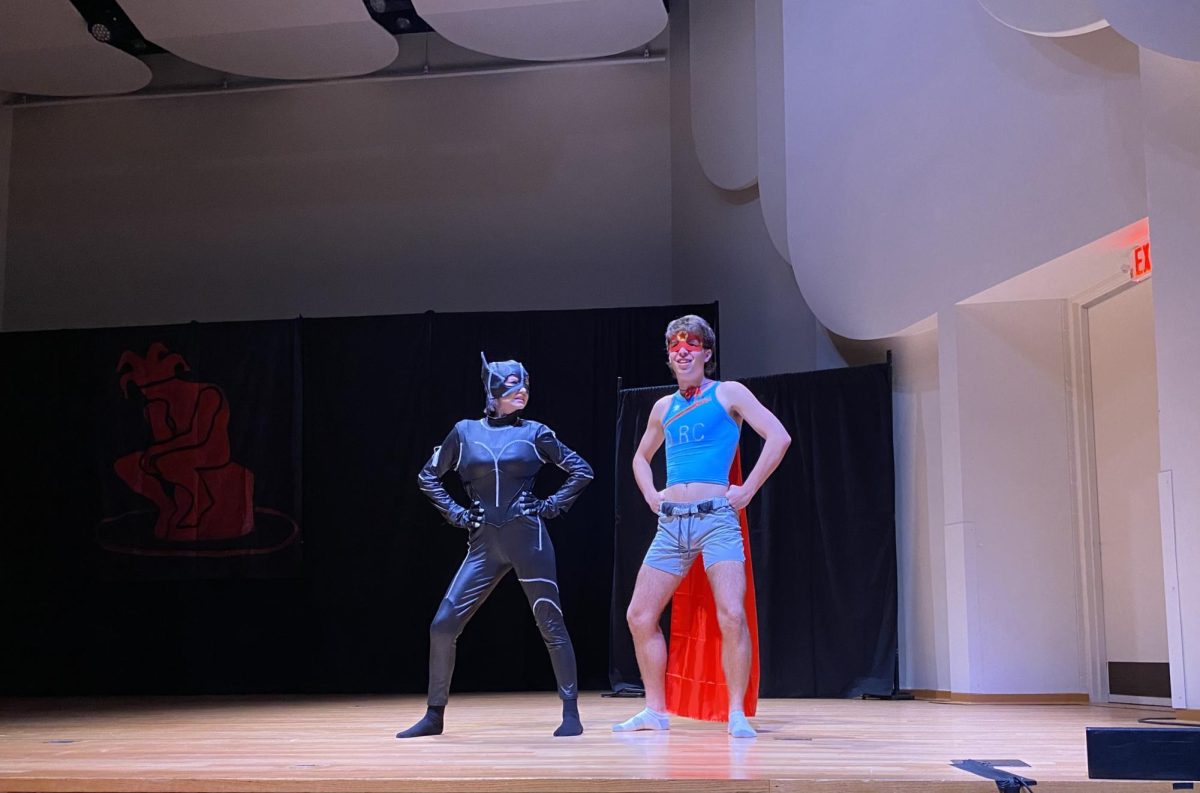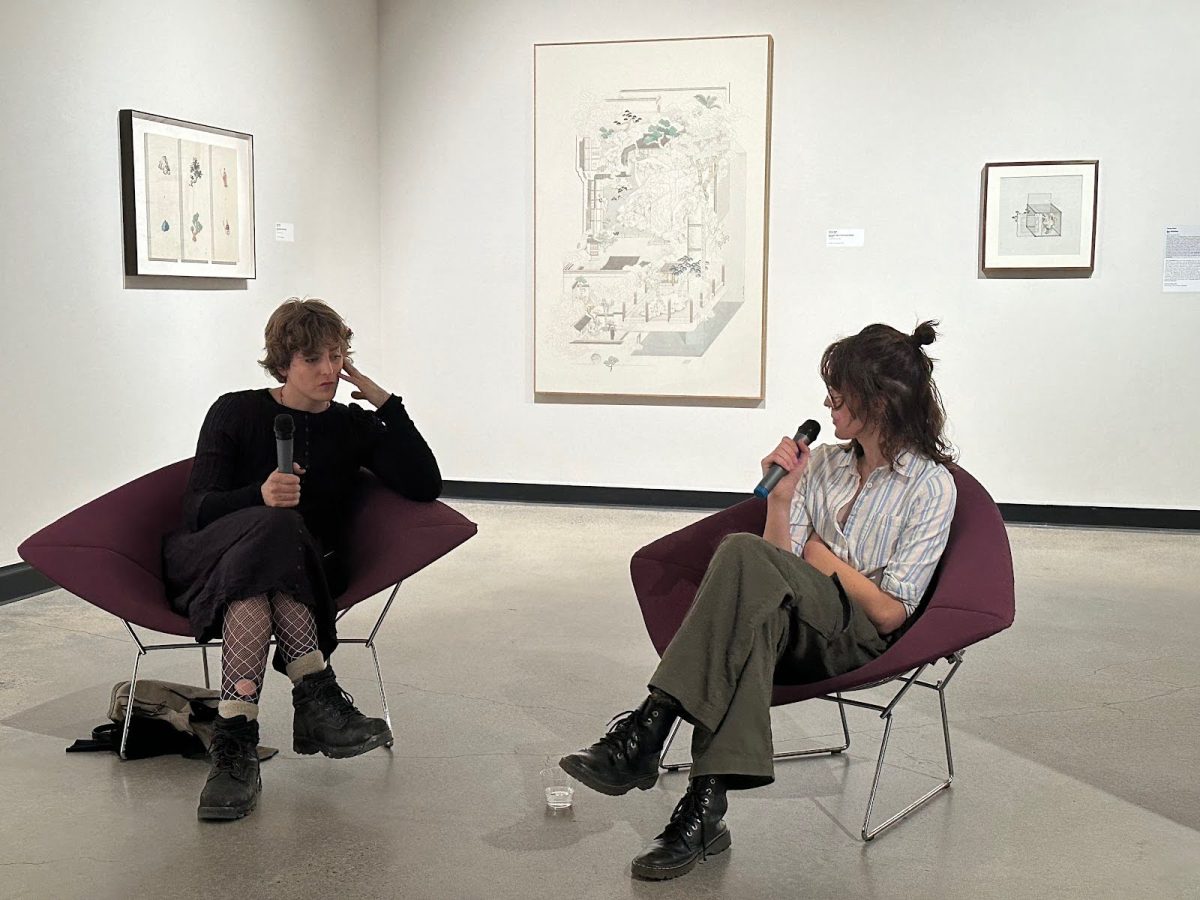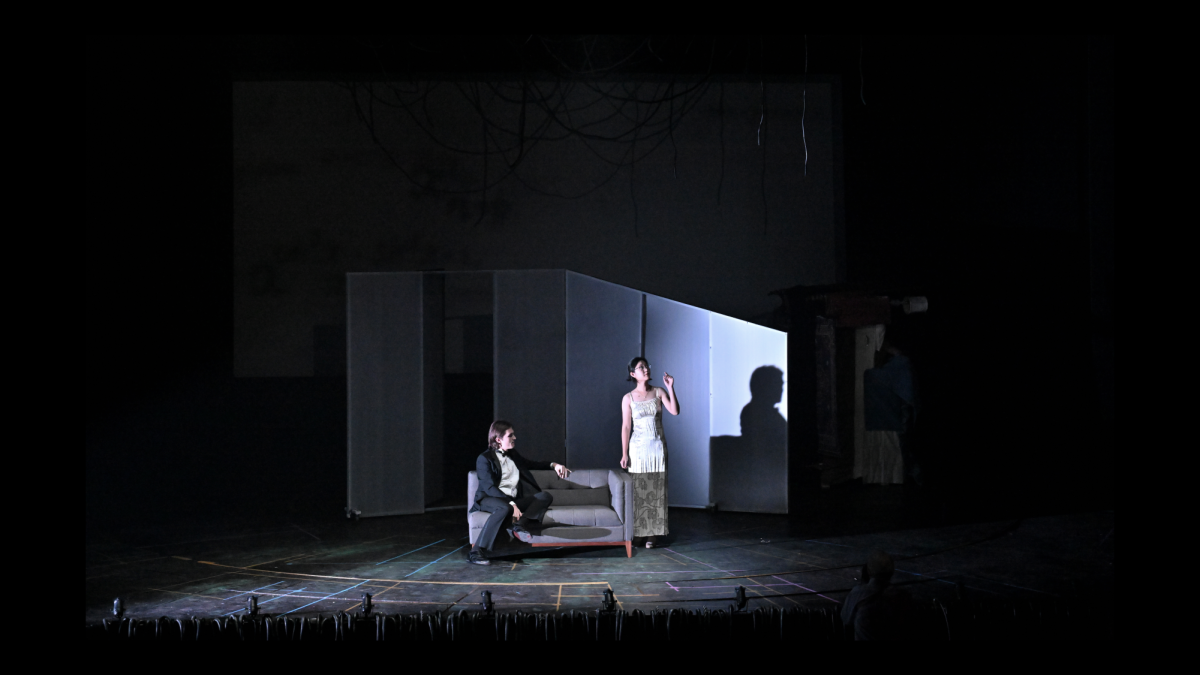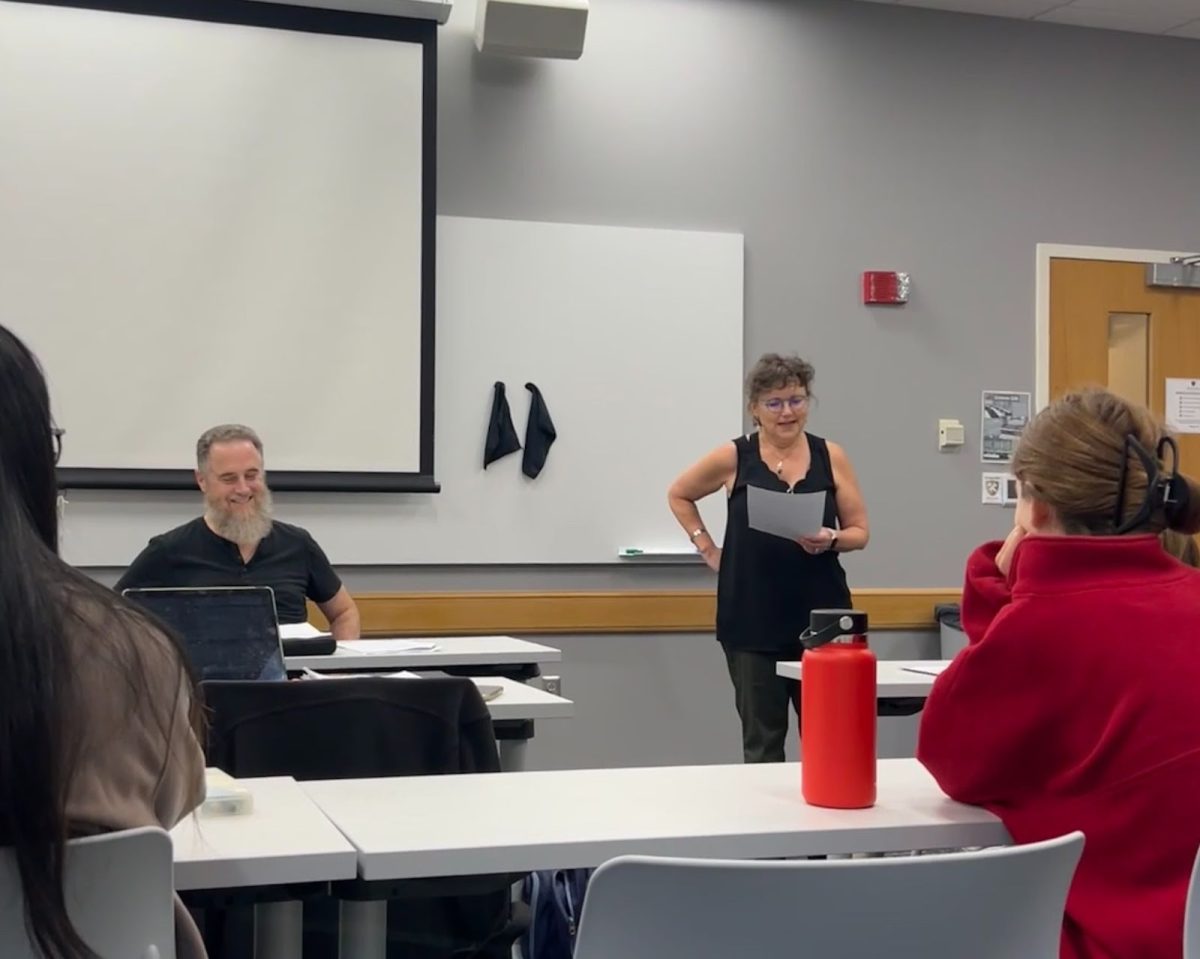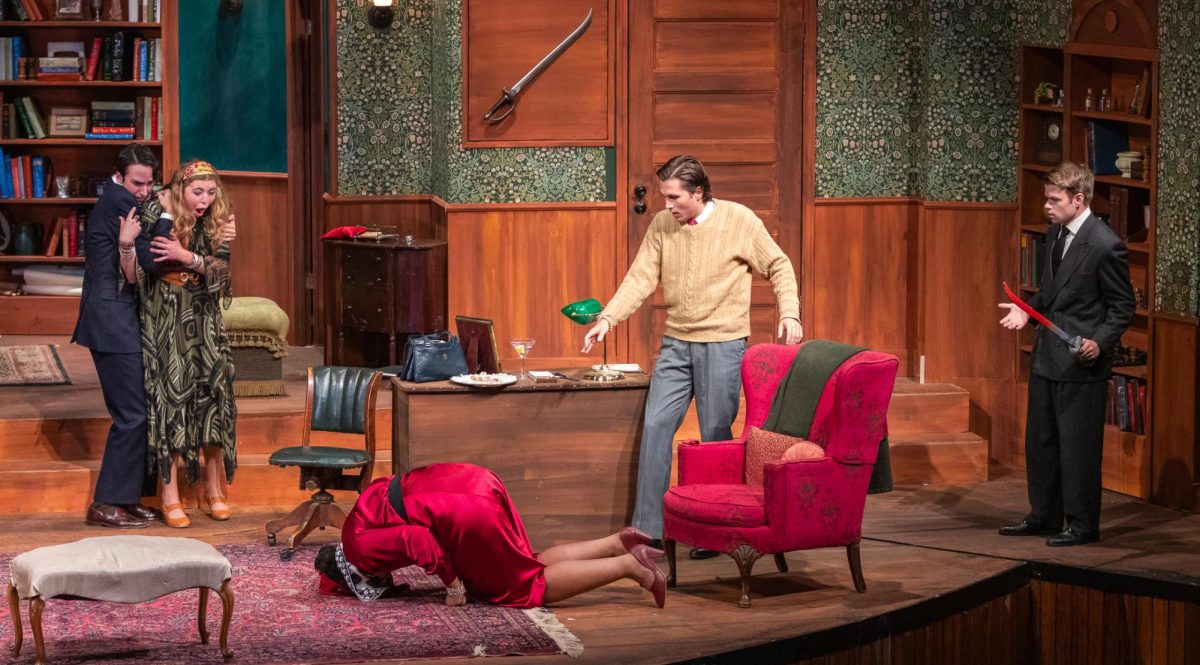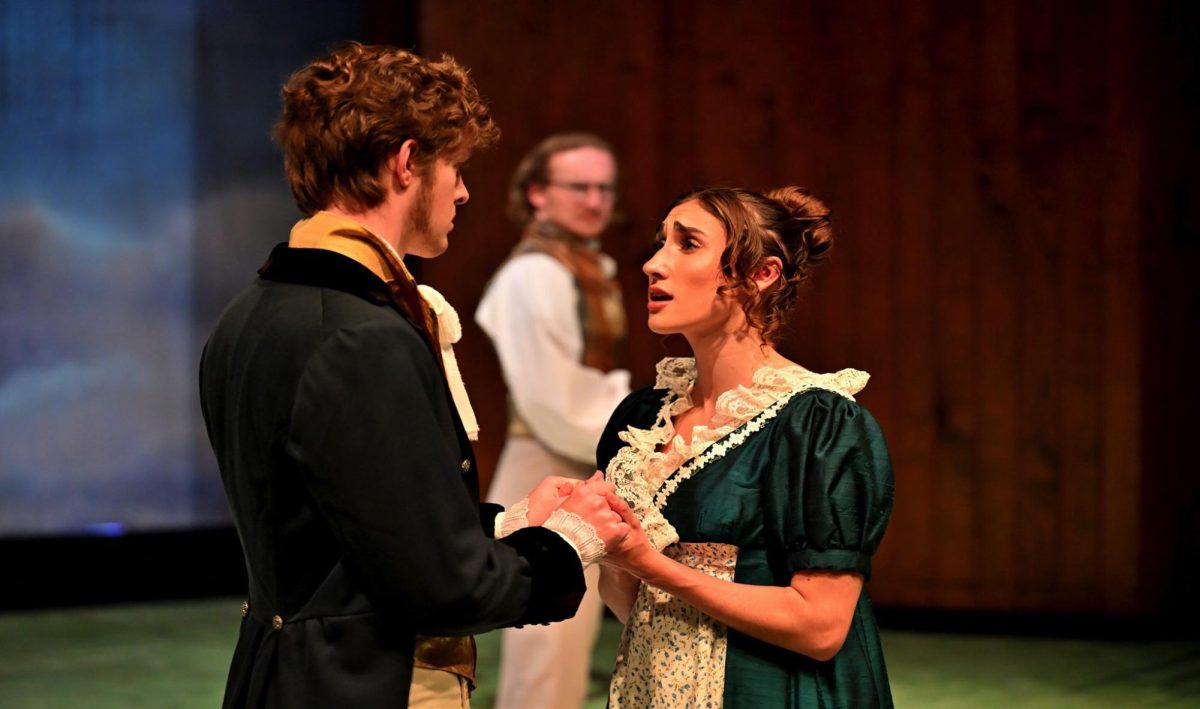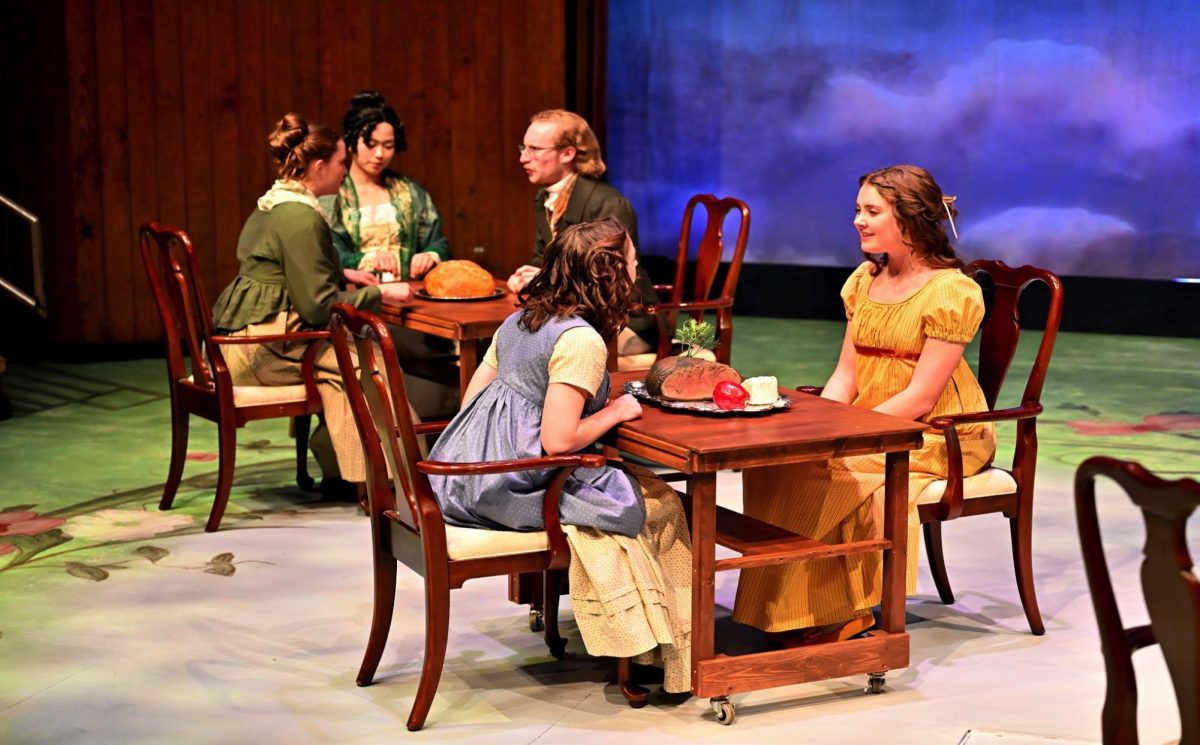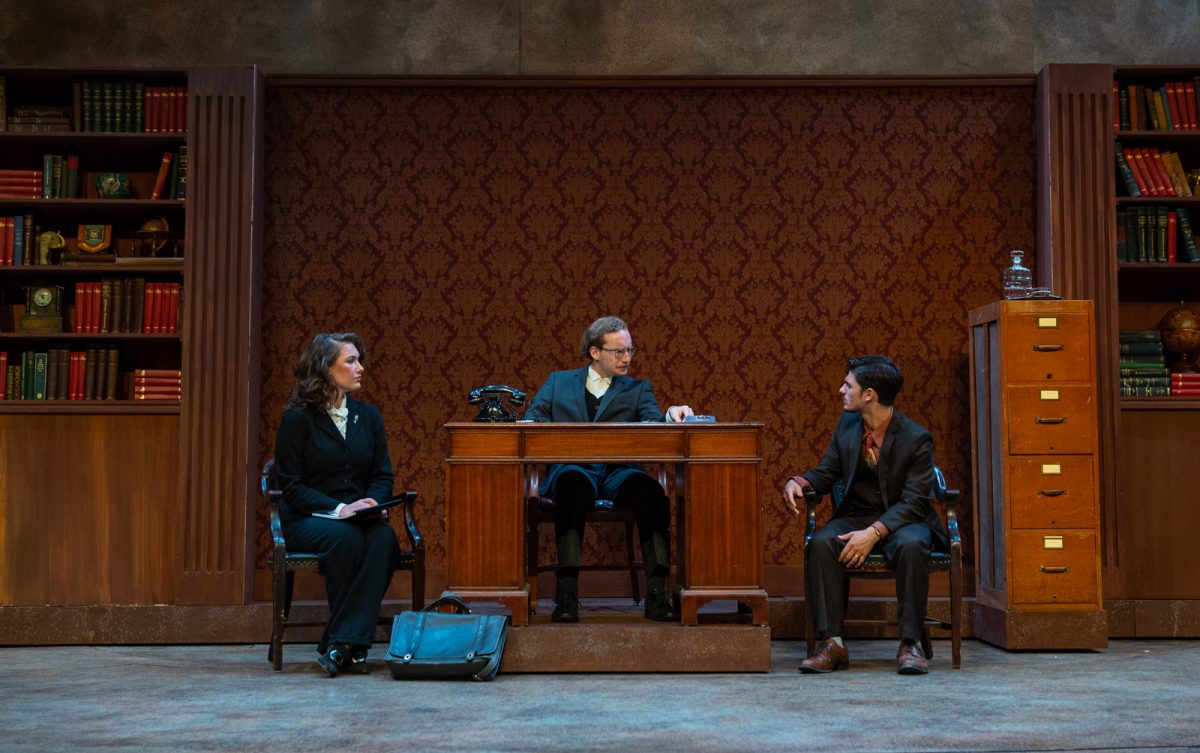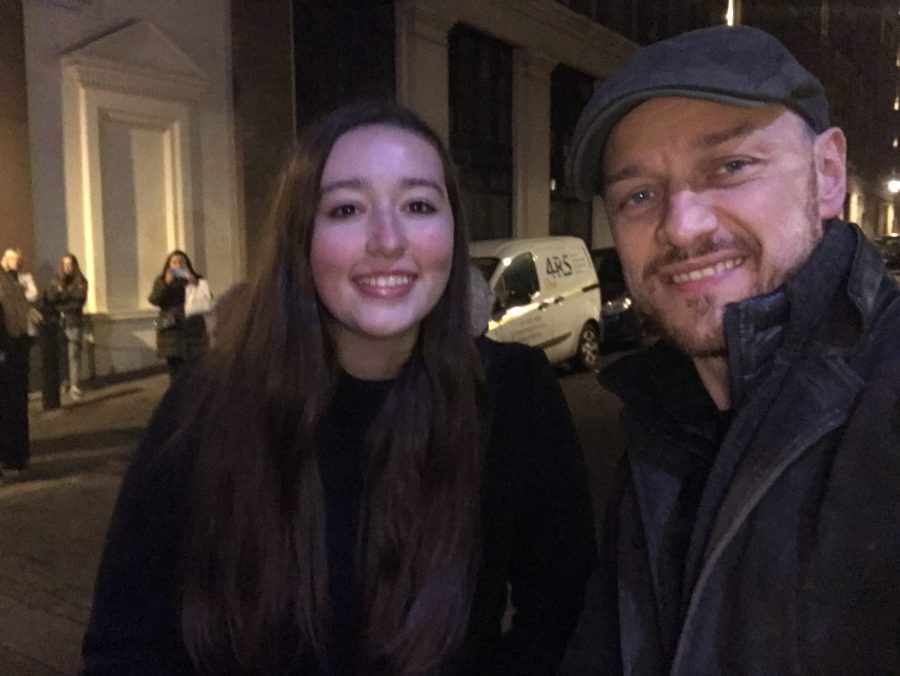On Feb. 1, Wake Forest University’s Fine Arts Center hosted a multimedia performance of “Azad (The Rabbit and the Wolf)” on Tedford Stage. The show, conceived and performed by ‘00 alumnus Sona Tatoyan, allows Tatoyan’s own life story and background to take center stage.
According to director Jared Mezzocchi, the production was in its raw form during the week leading up to the Wake Forest showing — which marked the third performance in a series of workshops. Audiences were granted a unique preview of the show as well as a glimpse into the essence of the evolving narrative. Mezzocchi noted that “Azad” has plans to debut in New York in the future.
The production was genuinely unlike anything I have ever seen. The story, which jumps around quite frequently, follows Tatoyan trying to unravel the thread of Armenian family dynamics and unpacking the trauma their and her experiences hold. She ties multiple narratives together through metaphor and allusions to the stories “A Thousand and One Nights,” “Alice in Wonderland” and “Little Red Riding Hood.”
The use of “A Thousand and One Nights” particularly stood out to me, as it provided the main narrative structure for the stage show. “A Thousand and One Nights” places emphasis on the three main roles: the storyteller, the listener and the eavesdropper. As the storyteller, Tatoyan showcased a wild performance that switched from warm narration of stories to guttural screams of trauma. Being the only actor on stage for the vast majority of the show, Tatoyan had a lot of pressure on her to keep the audience engaged. However, she thrived in this role, saying she felt a calling to be a storyteller — not a doctor like her father.
The common metaphor of “leaving one’s heart onstage” found profound embodiment in Tatoyan’s performance. Her artistry and delivery transcended mere storytelling. She afforded the audience a captivating experience of witnessing genuine healing before their very eyes.
The set itself also aided in the performance’s varying emotions. The physical set was relatively homey, filled with lush patterned rugs and warm lighting. There were books shoved into nooks on shelves, papers scattered across tables and cushioned chairs dotting the stage. This provided a stark contrast with the crude puppets and flashing lighting that brought the stage to life throughout the play. The warmth of the set design is a clue that the audience is hospitably invited in to assume the role of the listener — but the harsh contrast with the other mediums suggest that the story they are listening to is not always a pleasant one.
The show was a mixed media production, featuring videos, pictures, projections, stage acting and Karagöz shadow puppets. Many of the Karagöz puppets seen in the production were made by Tatoyan’s great-great grandfather Abkar. Throughout the show, Tatoyan speaks to the puppets. Some of them anger and mock her, while others guide her. The use of puppets is something I have never seen incorporated into a show like this. They provide a form of outside intervention in a show that is largely narrated by a single person.
While the show is about Tatoyan finding her freeing truth, the puppets force the audience to snap out of the story for a moment and assume a harsher viewpoint. I took this as the portrayal of the nonlinear grief process of healing from trauma and also the difficulty of sorting through one’s own thoughts when they come with the baggage of outside voices.
Although “Azad” came together beautifully in the end, the run time felt a tad long for a story with such a nonlinear narrative. The intentional harsh breaks and constant changing of subject created a really unique and artistic approach to a stage play, but repeating this jarring formula for over two hours created a bit of confusion. For instance, the impact of the ending, in which Tatoyan connects many of the scattered dots she mentioned throughout the show, was a bit dulled due to the time it took to reach those conclusions.
Freshman Carly Galbreth, the assistant stage manager for the production, says that the show aims to be at least 30 minutes shorter by the time it reaches a New York stage. With this particular performance being a workshop, I really admired the encouragement for feedback from the director, who encouraged the audience to find the creative team in the lobby after the performance if anyone had any critiques. With a piece that was so incredibly personal, outsider critique be perceived as an attack rather than constructive. This made the team’s receptiveness to criticism quite refreshing and commendable.
The next showing of “Azad” is scheduled at M.I.T.. The upcoming showcase is expected to introduce an enhanced and refined version of the show. As a student, witnessing “Azad” at Wake Forest, the alma mater of Tatoyan, is noteworthy.
During the performance, Tatoyan disclosed that while attending Wake Forest, she was cast in a show that performed on Tedford Stage. At the time, her professor, Dr. Maya Angelou, purchased tickets so that the entire class could attend. Post-show, Angelou encouraged Tatoyan to express her most authentic self in any way she can. Seeing Tatoyan articulate her story and truth in such a unique way at the very location that fostered such expression was both remarkable and magical.
The connection to Wake Forest that the production has holds significance to me as a current student. Learning that the university I attend gave someone the courage to speak their truth years ago and the platform to share it with others now is inspiring. Additionally, the impact extends to current students contributing to the production of “Azad,” a professionally made show. Galbreth noted that the “Azad” team instilled hope for the future of theater, emphasizing that “they’re not just producing works that put people in seats but producing work that is meaningful and that is relevant.”
In the playbill’s artistic statement, Tatoyan wrote that working on this show allowed her to see that “how we chose to frame our experience shapes how we see it.” This quote perfectly exemplifies what I took from “Azad” and how we all have the agency to become the storyteller in our own narratives.



